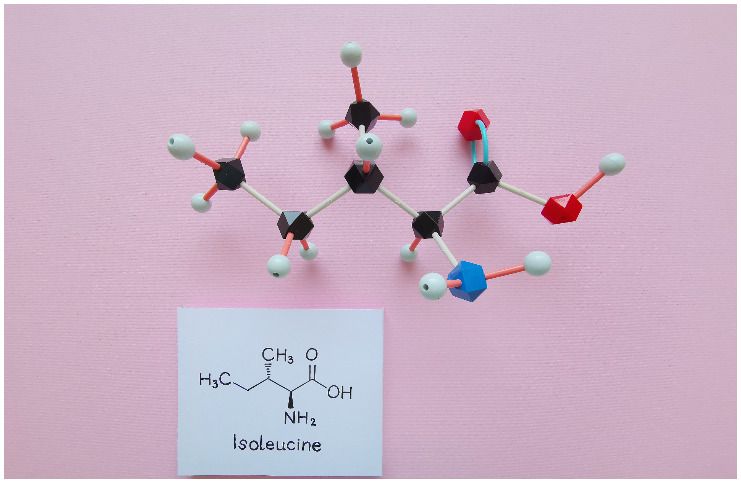Leucine
It is a branched-chain amino acid (BCAA) that is regularly taken as a supplement. This amino acid is essential to the human body, actually meaning that it cannot be produced. For this reason, it must be obtained from daily nutrition.
Because of its important role in protein synthesis, it is commonly used in bodybuilding and health supplements which are designed to increase exercise endurance, build muscle strength, promote muscle recovery, and reduce muscle breakdown.
Benefits
mTOR Activation
Many studies concluded that this amino acid activates mTOR, a protein synthesis regulator which is essential for skeletal muscle hypertrophy.
Weight Loss
Recent research established that this essential amino acid can help individuals lose unnecessary fat and reduce their weight. For instance, scientists at the University of Illinois have concluded that consuming foods rich in this amino acid results in more significant weight loss and fat loss.
Diabetes
According to new reports by the CDC, more than 100 million Americans are now living with prediabetes or diabetes. It has blood sugar-reducing properties by releasing insulin (a hormone that takes sugar from foods and transports it to the body’s cells) from the pancreas.
Deficiency
Although a deficiency is extremely rare in developed countries, when it happens, it can create havoc on the body with symptoms including – irritability, headaches, confusion, depression, fatigue, and dizziness.
Side Effects
Excessive intake (from supplements) has been reported to cause the following side effects:
- Allergy – it is frequently a cause of allergies in some people with symptoms including – breathing difficulties, hives, inflammation of the airways, and tightness in the chest.
- Hypoglycemia (low blood sugar or low blood glucose) – it is marked by a loss of awareness, weak motor control, subsequent loss of consciousness, and extreme forgetfulness.
- Ammonia accumulation – it can lead to kidney and liver failure if not addressed. This is why individuals with impaired kidney or liver function should not take a supplement containing this essential amino acid without first consulting a healthcare professional.
- Pellagra (better known as vitamin B3 – niacin) – it is a deficiency with signs and symptoms including – diarrhea, dermatitis, and mental disorders.
Food Sources
Healthy sources of this amino acid include – watercress, spirulina, alfalfa seeds, pumpkin leaves, spinach, taro, amaranth, broccoli, or red cabbage.
Isoleucine
It is an amino acid that is best known for its capacity to encourage clotting at the site of injury and to help heal and repair muscle tissue as well as to increase endurance.
It is not only an essential amino acid for human health, but is also a branched-chain amino acid together with L-Leucine and L-Valine. Because they are known to promote muscle recovery after intense training sessions, the combination of these 3 essential amino acids is typically used in high-quality protein powders.
Benefits
Hemoglobin
It has an important role in creating hemoglobin, a compound that transports the much-needed oxygen in red blood cells. More importantly, hemoglobin is required to ensure the health of the human body’s cells.
Boosts Metabolism
Consuming foods rich in this amino acid increases fat burning by boosting metabolism. This, ultimately, leads to losing extra weight. Also, this is very useful, since a slow metabolism will lead to poor blood circulation, an accumulation of toxins in the body, and slow functioning of the internal organs.
Blood Glucose Regulation
It is effective in keeping energy levels stabilized because of its capacity to regulate blood glucose. Moreover, this amino acid is unique since it can break itself down so that it can provide energy when the body needs it.
Promotes Endurance
This amino acid is most likely best known for its use in helping heal muscle tissue and increasing endurance. Many bodybuilders and athletes (amateurs and professionals) use this amino acid due to its ability to help the muscles recover from physical activities and enhance energy levels.
Deficiency
A deficiency is very rare, but when it occurs, it may lead to symptoms such as:
- irritability;
- confusion;
- depression;
- fatigue;
- dizziness;
- headaches.
Side Effects
Overconsumption of supplements containing this amino acid may lead to excessive urination, liver disease, kidney problems, and depression.
Food Sources
Healthy foods rich in this essential amino acid include – red kidney beans, chickpeas, navy beans, adzuki beans, soybeans, lima beans, corn, rice bran, cabbage, beer yeast, lentils, peas, flaxseeds, hemp seeds, sunflower seeds, chia seeds, Brazil nuts, almonds, pecans, hazelnuts, watermelon seeds, peanuts, spinach, kale, pumpkin seeds, millet, quinoa, amaranth, oat bran, and oatmeal.
Leucine vs Isoleucine – Differences
These two branched-chain amino acids have slightly different functions in the body but both are considered essential amino acids. This means that the human body cannot produce these essential nutrients, hence, they must be acquired from nutrition.
However, leucine has much more significant power in stimulating protein synthesis compared to any other essential amino acid as well as it has been shown to boost the manufacture of protein in muscle cells.
Images credit – Shutterstock
READ THIS NEXT: Starch vs Cellulose
